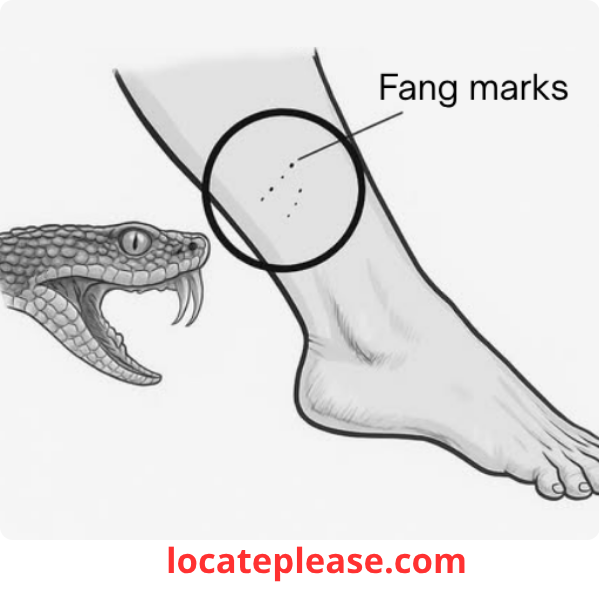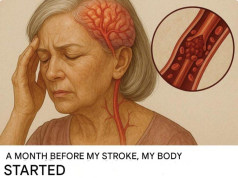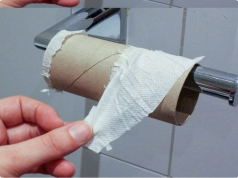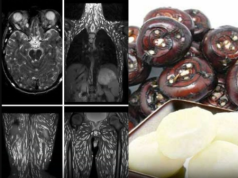As summer brings more people into forests, mountains, and rural trails, the chance of encountering a snake increases. While snakebites are rare, they can happen — and in remote areas, medical help may be hours or even days away .
In such situations, knowing what to do — and what not to do — can mean the difference between recovery and severe complications, or even life and death.
Dr. Pavel Volchkov, an infectious disease specialist and immunologist, shares critical advice on how to act if you or someone with you is bitten by a snake — especially when an ambulance can’t reach you in time.
The Best Defense: Prevention
“The only truly effective treatment for a snakebite is antivenom ,” says Dr. Volchkov. “But in remote areas, it’s often not available. So the best strategy is prevention .”
Most snakebites occur when people accidentally step on or provoke a snake. Snakes usually bite in self-defense, not aggression.
Basic Safety Rules to Avoid Snakebites
- Avoid walking through tall grass or dense underbrush — use marked trails when possible.
- Wear closed-toe shoes or boots with thick soles and high tops — ideal for protecting ankles.
- Never try to touch, handle, or capture a snake — even if it looks harmless.
- Back away slowly if you see a snake — don’t make sudden movements.
- Use a walking stick to probe ahead in covered or rocky areas.
- Supervise children and pets — they’re more likely to wander into danger.
- Carry a flashlight at night — many snakes are nocturnal.
🐍 Remember: Snakes are more afraid of you than you are of them. Give them space, and they’ll usually retreat.
Should You Carry a First Aid Kit?
Yes — but don’t expect it to include antivenom .
Antivenom is only administered in medical facilities and is not available in pharmacies or personal kits (except for trained professionals like herpetologists).
Essential Items to Carry:
- Antiseptics (chlorhexidine, alcohol wipes, hydrogen peroxide)
- Sterile gauze, bandages, and adhesive dressings
- A small knife and flashlight
- Fully charged phone (or power bank)
- Whistle or signal device — to call for help if you’re alone
These tools won’t neutralize venom, but they can help you stay calm, clean the wound, and signal for help .
First Aid After a Snakebite: What to Do (and What NOT to Do)
When a bite occurs, panic is your worst enemy . Fear increases heart rate, which can speed up venom circulation .
✅ Do This:
- Stay Calm
Keep breathing slowly. Panic worsens the situation. - Keep the Bitten Limb Immobilized and at or Below Heart Level
This slows the spread of venom through the lymphatic system. - Do NOT Run or Walk Quickly
Avoid any physical exertion — even walking to help can make things worse. - Clean the Wound Gently
Use antiseptic and cover with sterile gauze to prevent infection.
Note: The bite may not bleed much — venom is injected, not spilled. - Remove Tight Clothing or Jewelry
Swelling can develop rapidly — better to remove rings, watches, or tight socks early. - Rest and Wait for Help
Conserve energy. Use your phone or whistle to alert others. - Seek Medical Help Immediately
Antivenom is most effective within the first hour . After 6 hours , its effectiveness drops significantly, and tissue damage may become irreversible.
❌ What NOT to Do (Dangerous Myths)
- Do NOT cut the wound — this increases infection risk and doesn’t help.
- Do NOT try to suck out the venom — it’s ineffective and can introduce bacteria or expose the helper to venom.
- Do NOT apply a tourniquet or tight bandage — cutting off blood flow can cause tissue death and lead to amputation.
- Do NOT ice the area — cold can worsen tissue damage.
- Do NOT drink alcohol or caffeine — these can accelerate venom absorption.
⚠️ Bottom line: No home remedy removes venom. Only antivenom does.
How to Tell If the Snake Was Venomous
While not always easy, there are clues:
- Venomous bites typically leave two distinct fang marks , often with swelling and discoloration within minutes.
- Non-venomous bites usually look like a series of small scratches or teeth marks.
But don’t wait to see the marks — treat every bite as potentially dangerous.
🔍 Note: Some bites are “dry bites” — meaning no venom is injected. But you can’t tell the difference without medical evaluation.
Why Are Some Bites Mild and Others Severe?
Several factors influence how serious a bite becomes:
- Amount of venom injected — snakes can control this; a defensive bite may release less.
- Location of the bite — bites on the face, neck, or torso are more dangerous.
- Physical activity after the bite — running or panicking spreads venom faster.
- Age and health — children and elderly people are more vulnerable.
Types of Snake Venom and Their Effects
|
Hemotoxic
|
Vipers, pit vipers
|
Causes swelling, tissue damage, bruising, blood clotting issues, and necrosis
|
|
Neurotoxic
|
Cobras, mambas, coral snakes
|
Affects the nervous system — can cause paralysis, breathing difficulties, blurred vision
|
🌍 In rural areas of South America, Africa, and parts of Asia, hemotoxic bites are most common . While rarely fatal, they can cause long-term disability if not treated.
Possible Consequences After a Bite
Even with survival, complications can include:
- Severe swelling and blistering
- Skin discoloration (purple, black)
- Tissue necrosis (dead tissue)
- Loss of mobility in the affected limb
- Permanent scarring or contractures (especially in older patients)
Prompt treatment greatly reduces these risks.
Final Tips and Recommendations
- Tell someone your plans before hiking or camping — include your route and expected return time.
- Wear protective clothing — long pants and sturdy boots are your first line of defense.
- Avoid lifting rocks or logs with bare hands.
- Stay calm if bitten — your mindset can save your life.
- Never attempt to treat a snakebite with outdated methods — rely on science, not folklore.
Conclusion: Act Fast, Stay Calm, Prevent First
A snakebite in a remote area is a medical emergency — but how you respond can change the outcome .
There is no substitute for professional care and antivenom. But until help arrives, your best tools are calm, stillness, and knowledge .
As Dr. Volchkov emphasizes:
“Prevention is the best medicine. But if the worst happens — stay still, stay smart, and survive.”
🌿 Respect nature. Prepare wisely. And remember: the safest snake is the one you never disturb.










